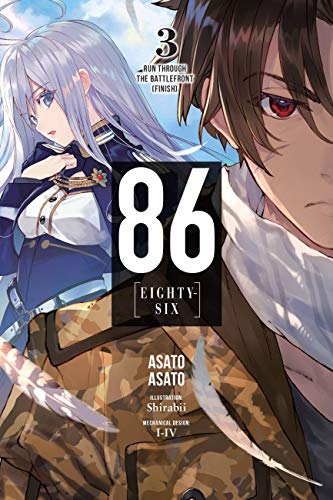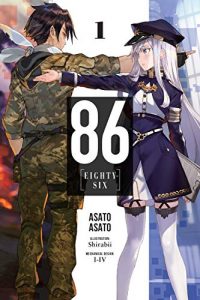By Asato Asato and Shirabii. Released in Japan by Dengeki Bunko. Released in North America by Yen On. Translated by Roman Lempert.
True to its title, this is the second half of the story that began in the second volume. The Legion now have a massive Railgun that they used to destroy 40% of the Federation’s forces. Given that the Federation lacks Kamijou Touma, they need to defeat it by more military means. Fortunately, the railgun was slightly damaged when it was dealing out masses of deaths, so there’s time to send a strike force. That said, the chance the strike force survives and takes out the Railgun is basically 0%. It’s essentially a suicide mission. And so, as you likely guessed, it’s time to send out the 86, who are not fitting in well with the other soldiers and don’t seem to want to retire somewhere and grow potatoes. It’s very much a “if you love war so much why don’t you MARRY it?” sort of attitude, and our heroes just sort of shrug and get on with it. They’re the only ones who can really do this anyway. But will they have help?
As you might expect, a great deal of this book is very grim. We see soldiers with wives and families tragically blown to bits, and drivers shielding their superiors and ending up as corpses. There’s also the 86, who are, as is pointed out, still children, but we’re not really in a position in this war when they can avoid using them. They want to try not to be like the Republic… but when things go badly and someone has to be sacrificed, it’s all too easy to go with the ones who everyone already pities, especially when they’re so… well, stoic. Especially Shin, who in this book contrasts himself with Kiriya, one of the Legion’s main forces but still with memories of Frederica, his “princess”. We get POV from both of them in the book, and near the end Shin realizes that the main difference between them may simply be that Shin isn’t dead… something he’s not confident is a good thing.
Fortunately there is a bit of… well, I won’t say humor, but less bleak stuff here. I did laugh out loud at the reveal halfway through the book. We all knew it was coming, but it’s still really funny seeing every single one of the 86 (yes, including Shin) scream “ARE YOU AN MORON?!” at the same time. We also get the appearance of Lena, who has been fighting a losing battle against the Legion on her own end, and ends up meeting with Shin at the final battle with the Railgun. Neither one know who the other one is, though Shin eventually figures it out. It’s a reminder at how good Lena is at strategy, and I look forward to her actually joining the main cast again after this. She’s also a reminder that Shin actually was more emotional and occasionally smiled in the first book, something we haven’t seen at all in this two-parter. Frederica has helped, to be sure, but maybe Lena is just what the 86 need – someone who accepts them without pity.
The author has said the next book will be lighter in tone, something I don’t believe for a minute, but it should at least be another one-volume book. In any case, if you enjoyed the first two book in the series this is still a very good read. It’s not quite as good as the first, but that’s a high bar.



